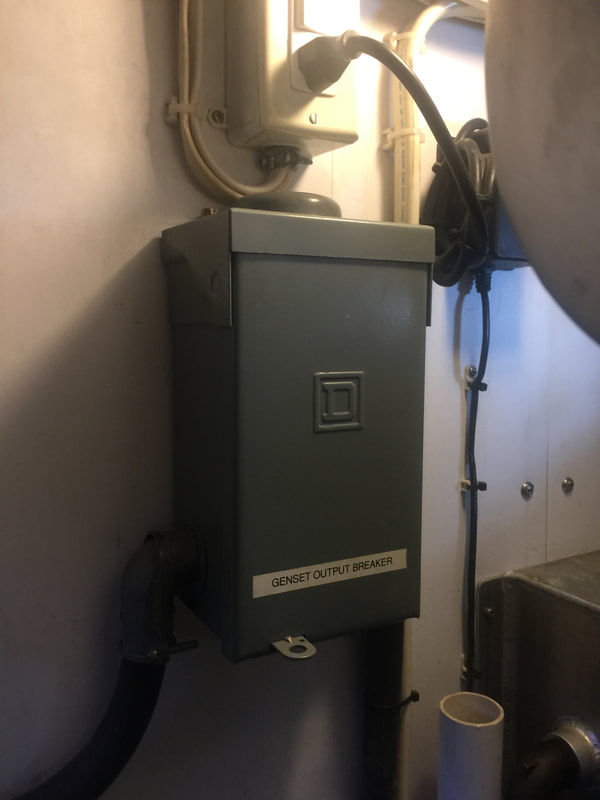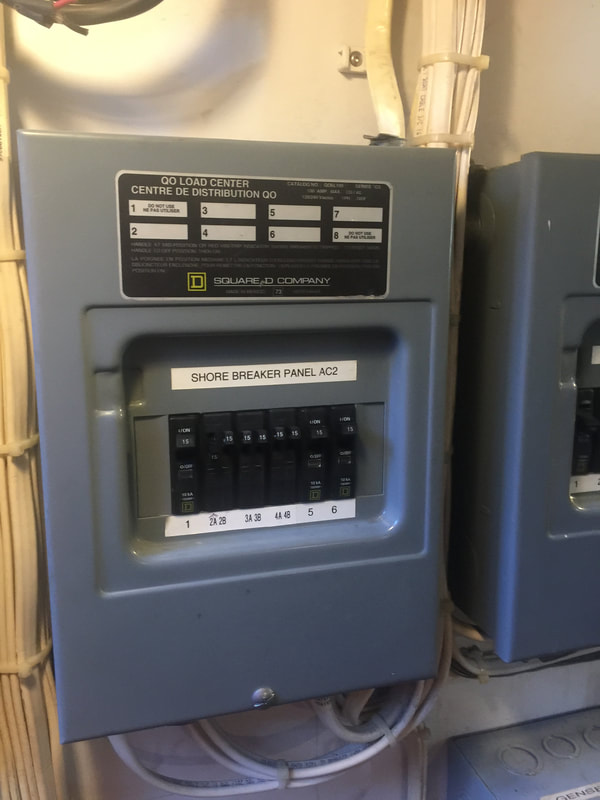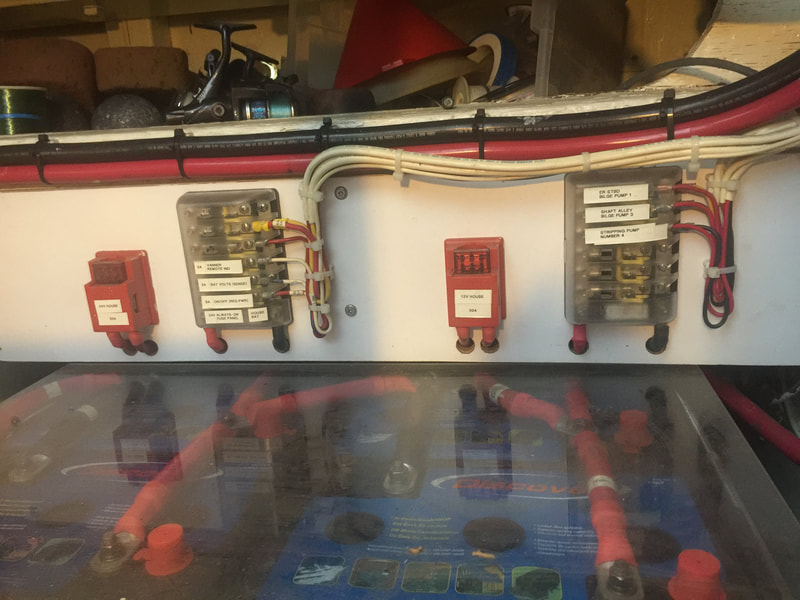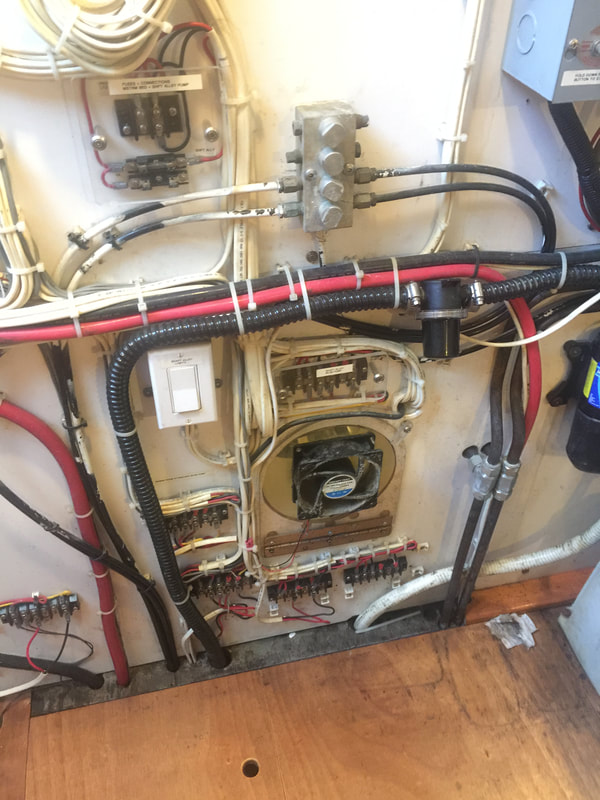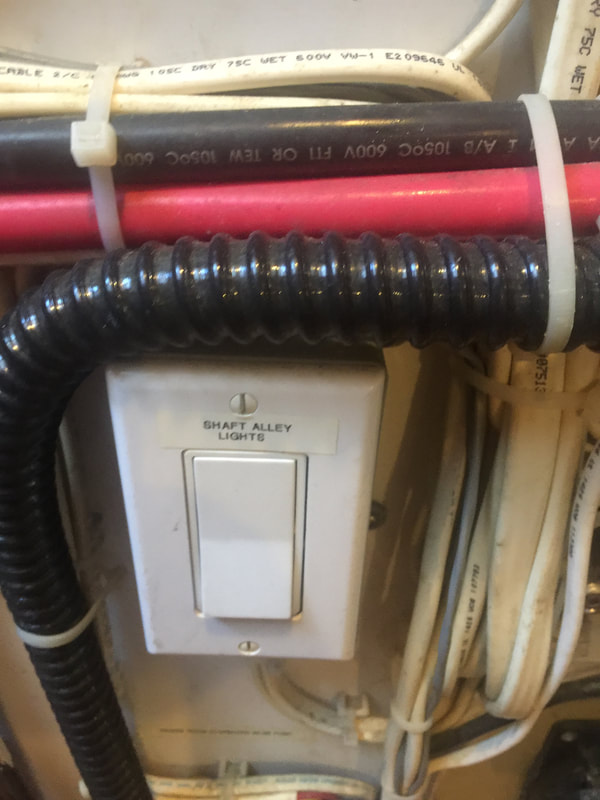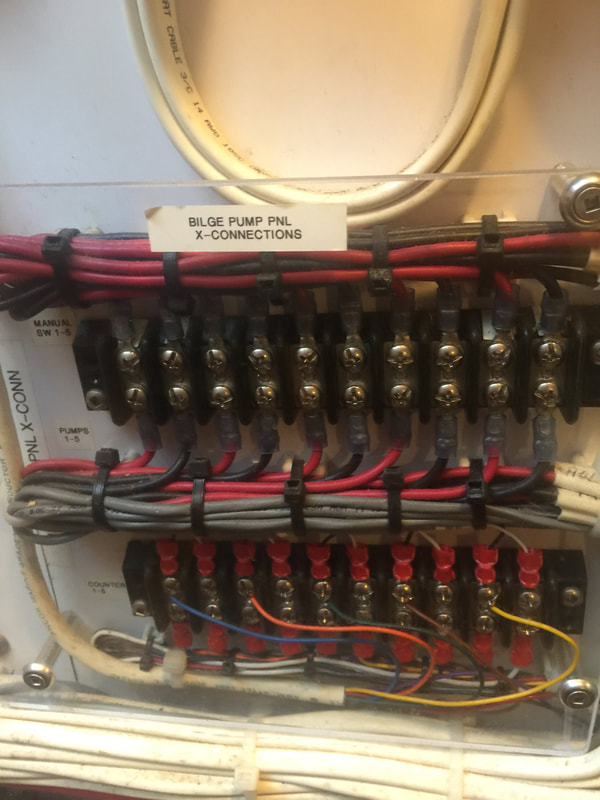DC Electrical Systems
When I bought Island Eagle, we knew that she would need some electrical work. Some of the problems were obvious, such as rats nest of wires coming out of rusty junction boxes. Some of the problems were a bit more complex, such as the question of whether to convert the boat from the existing 32 volt system to a more modern 24 volt one.
Lest you think that the problems were overwhelming, there were also some real positives (no pun intended): All lighting on the boat was battery powered (32 volt, of course), which avoided having to run the genset. Most of the wiring runs were relatively exposed and easy to get at, which would make rewiring easier. The roomy engine room afforded plenty of space for battery stowage, panels, inverters, etc. In short, rewiring would be difficult but not impossible.
Luckily, I had a fair bit of experience wiring, and I come from 3 generations of electricians. After a thorough investigation and consulting with the experts, I came to the conclusion that the only solution was to rewire the entire boat. This included new batteries, new primary wiring, new load panels, new shore power, an isolation transformer, a new genset, and completely new AC load wiring. Throw in the conversion of all motors from 32 to 24 volts, and you've got a fun summer project. Well, OK, more like a two year project, but you get the idea.
There are four main electrical systems on the boat: Main engine start, Genset start, House 12 Volt, House 24 Volt, and 120 Volt.
Main Engine Start -- 24 Volt
The main engine starting system is a pair of Group 31 batteries in series. They have a 600 Amp disconnect at source, and a paralleling switch which allows the 24 volt start bank to be paralleled with the 24 volt house bank. The start bank also feeds the windlass, as I discovered that the start bank had higher voltage after a night on the hook. There is also an "Always On" fuse panel which feeds one of the bilge pumps.
The start bank is kept topped up by a NOCO smart charger.
Genset Start -- 12 Volt
The genset has a dedicated 8D AGM start battery, and is kept charged with a trickle charger.
House Bank -- 24 Volt
The main house bank consists of 12 L-16 AGM batteries, giving over 800 amp hours at 24 volts. These are primarily used for the inverter, but also feed other 24 volt consumers (lighting, pumps, etc.)
House Bank -- 12 Volt
The 24 volt house bank also supplies 12 volts via a Vanner Voltmaster. This setup has worked absolutely perfectly.
120 Volt Systems
The 120 volt systems are built around a Trace SW4024MC inverter. This is an amazing machine that provides two AC inputs, a 100 amp battery charger, a 4000 watt inverter, and fully-automatic switching. In practice, the SW4024 has been flawless.
There are three primary 120 volt distributon panels: one fed by the genset, one fed by the inverter, and one fed by either the shore power or the genset. This allows load balancing, while also ensuring that large loads (e.g. water tank, heater) are not supplied by the inverter.
Shore Power
The boat has one 30 Amp shore power input, just aft of the engine room companionway. It runs immediately through a Charles isolation transformer.
Genset
We installed a new 6 KW Kubota genset in 2004. It is keel cooled and has a dry exhaust. It starts, runs, stops, and makes power perfectly. When we are on the hook, we run it for an hour or two in the morning to top up the house bank, and that's it.
Inverter
As noted above, the inverter is the heart of the system. It will automatically sense which AC input (shore or genset) is active, and supply power accordingly. On both inputs, it will supply up to 100 Amps of charging. If there is no AC power available, it will seamlessly switch to inverter mode.
Bottom line: Every single inch of wiring and electrical equipment on Island Eagle is new in 2005. You and your guests can count on 24 x 7 x 365 AC power, silent and clean DC lighting, and you have enough capacity that they can even use their hairdryers.
There are three primary 120 volt distributon panels: one fed by the genset, one fed by the inverter, and one fed by either the shore power or the genset. This allows load balancing, while also ensuring that large loads (e.g. water tank, heater) are not supplied by the inverter.
Shore Power
The boat has one 30 Amp shore power input, just aft of the engine room companionway. It runs immediately through a Charles isolation transformer.
Genset
We installed a new 6 KW Kubota genset in 2004. It is keel cooled and has a dry exhaust. It starts, runs, stops, and makes power perfectly. When we are on the hook, we run it for an hour or two in the morning to top up the house bank, and that's it.
Inverter
As noted above, the inverter is the heart of the system. It will automatically sense which AC input (shore or genset) is active, and supply power accordingly. On both inputs, it will supply up to 100 Amps of charging. If there is no AC power available, it will seamlessly switch to inverter mode.
Bottom line: Every single inch of wiring and electrical equipment on Island Eagle is new in 2005. You and your guests can count on 24 x 7 x 365 AC power, silent and clean DC lighting, and you have enough capacity that they can even use their hairdryers.


